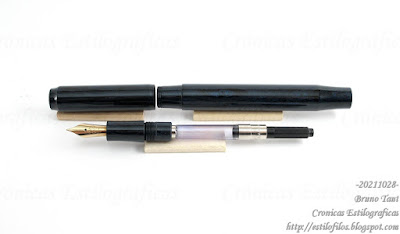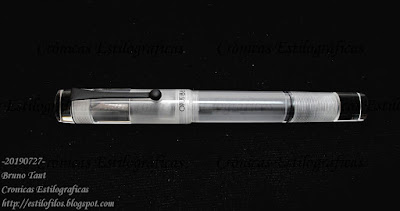So, the Eboya market policy seems limited to release new models and new ebonite colors as long as the filling system did not change. And such is the case of the newer model, the tan-pen (in lower case).
Its originality comes from its size: very small, very short; just 97 mm in length closed. And the well-known Eboya construction quality does the rest: the cap posts very securely onto the barrel. The result is a regular sized pen, even if on the shorter side. The price to pay is that it can only be inked with short cartridges (or as eyedropper).
The tan-pen is certainly attractive and original, and represents a new approach to pens in the Eboya catalog. My only complain is that the company does not make it in black—you can choose almost any color but black. A black tan-pen, though, is available at sale events as a demonstration pen for potential customers, but is not for sale.
These are the dimensions of the tan-pen:
Length closed: 97 mm
Length open: 91 mm
Length posted: 133 mm
Diameter: 12.2 mm
Weight: 11.7 g (dry)
Ink deposit: 0.8 ml (short standard cartridge)
The price, JPY 31200, plus taxes.
Lamy Accent – Franklin Christoph Urushi Red.
Bruno Taut
October 31st, 2022
etiquetas: Eboya, mercado
Bruno Taut
October 31st, 2022
etiquetas: Eboya, mercado




























































